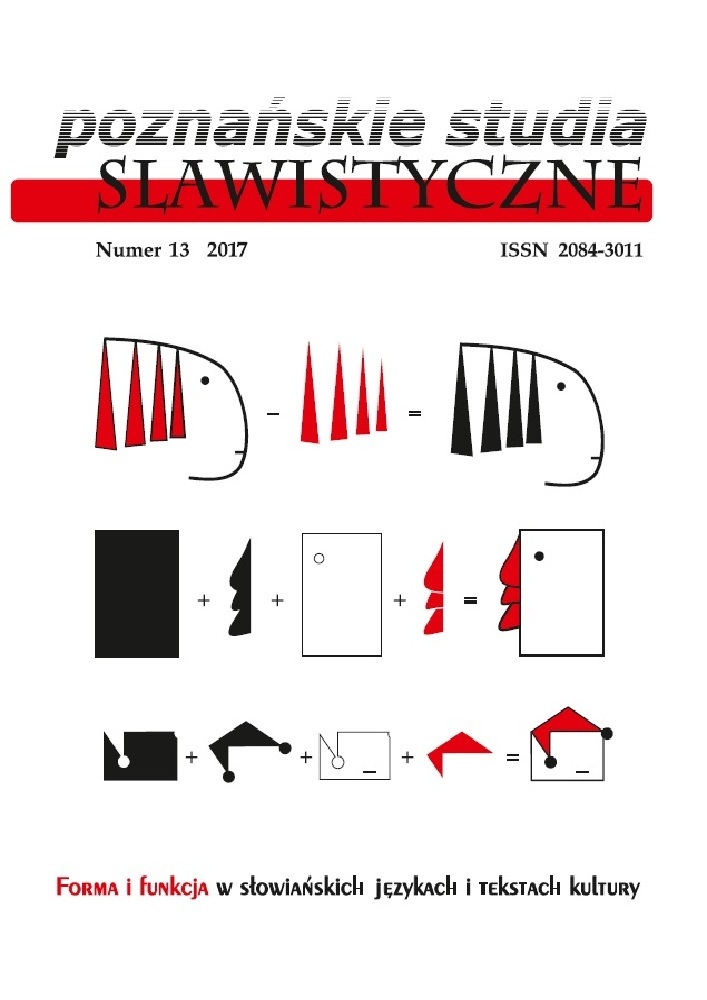Abstract
The paper focuses on the relation between imperatives and imperativeness, that is, between the imperative as a grammatical mood with a defined form and its assigned function, on the one hand, and imperativeness as a communicative value that can manifest itself through different morphosyntactic forms, on the other. In this sense, the function of imperatives is analysed in the context of the theory of speech acts. The analysis reveals that different imperative forms can be classified as different types of speech acts based on their various communicative roles. The theory of politeness dictates that directness, which is a basic feature of imperatives, should be avoided in polite communication. This is why we also focus on other morphosyntactic forms whose form indicates a reduced level of directness, but whose content still has the characteristics of imperatives.References
Austin, J.L. (2014). Kako djelovati riječima. Prev. A. Milanko. Zagreb: Disput.
Brown, P., Levinson S.C. (1987). Politeness. Some universals in language usage. Cambridge: Studies in Interactional Sociolinguistics 4.
Broz, I. (1885). Prilozi za sintaksu jezika hrvatskoga. U: Rad JAZU, knj. LXXVI. Zagreb: JAZU, str. 1–69.
Burkhardt, A. (1990). Speech Act Theory – the decline of a paradigm. U: Speech Acts, Meaning and Intentions. Critical Approaches to the Philosophy of John R. Searle. Ur. A. Burkhardt. Berlin: Walter de Gruyter, str. 91–128.
https://doi.org/10.1515/9783110859485.91
Bühler, K. (1934). Sprachtheorie. Die Darstellungsfunktion der Sprache. Jena: Gustav Fischer.
Dolinina, I. (2001). The imperativ paradigm: meaning and forms. U: Typology of imperative constructions. Ur. V.S. Khrakovskij, München: Lincom Europas, str. 501–509.
Fraser, B. (1990). Perspectives on Politeness. „Journal of Pragmatics”, vol. 14, br. 3, str. 219–236. file:///C:/Users/Nikolina/Downloads/Perspectives_on_politeness.pdf. 22.09.2017.
Goffman, E. (1967). Interaction ritual. Essays on face-to-face bahavior. New York: Pantheon Books.
Habermas, J. (1981). Theorie des kommunikativen Handelns. Frankfurt am Main: Suhrkamp Verlag.
Kádár, D., Haugh, M. (2013). Understanding politeness. Cambridge: University Press.
https://doi.org/10.1017/CBO9781139382717
Katnić-Bakaršić, M. (2012). Između diskursa moći i moći diskursa. Zagreb: Zoro.
Lakoff, R.T., Ide, S. (2005). Broadening the Horizon of Linguistic Politeness. Amsterdam–Philadelphia: John Benjamins Publishing Company.
https://doi.org/10.1075/pbns.139
Leech, G.N. (1983). The Pragmatics of Politeness. London–New York: Longman.
Marot, D. (2005). Uljudnost u verbalnoj i neverbalnoj komunikaciji, „Fluminensia. Časopis za filološka istraživanja”, god. 17, br. 1, str. 53–70.
Palašić, N. (2015). Odnos rečeničnoga modusa i implikatura. „Fluminensia. Časopis za filološka istraživanja”, god. 27, br. 2, str. 31–43.
Pranjković, I. (2013). Gramatička značenja. Zagreb: Matica hrvatska.
Pranjković, I., Badurina, L. (2012). Načini izražavanja imperativnosti. U: Bosanskohercegovački slavistički kongres I. Zbornik radova, knjiga 1 (Lingvistika). Ur. M. Omerović, Sarajevo: Slavistički komitet, str. 619–628.
Schmerling, S. (1982). How imperatives are special and how they aren’t. U: Papers from the Parasession on Nondeclarative. Ur. R. Schneider, K. Tuite, R. Chametzky. Chicago: Chicago Linguistic Societystr, str. 201–218.
Searle, J.R. (1969). Speech Acts. An Essay in the Philosophy of Language. New York: Cambridge University Press.
https://doi.org/10.1017/CBO9781139173438
Searle, J.R. (1975). Indirect Speech Acts. U: Syntax and semantics, vol. 3. Ur. C. Morgan. New York: Academic Press, str. 59–82.
Searle, J.R. (1979). Expression and meaning. Studies in the Theory of Speech Acts. Cambridge: University Press.
https://doi.org/10.1017/CBO9780511609213
Schilling, U. (1999). Kommunikative Basisstrategien des Aufforderns. Eine kontrastive Analyse gesprochener Sprache im Deutschen und im Japanischen. Tübingen: Max Niemeyer Verlag.
https://doi.org/10.1515/9783110952216
Silić, J., Pranjković, I. (2005). Gramatika hrvatskoga jezika za gimnazije i visoka učilišta. Zagreb: Školska knjiga.
Thomas, J. (1995). Meaning in interaction. An introduction to pragmatics. London–New York: Routledge.
Wunderlich, D. (1976). Studien zur Sprechakttheorie. Frankfurt am Main: Suhrkamp.
Zimmermann, W. (1988). Fragehandlungen und Frageverben. Ein Beitrag zur Vermittlug von Pragmatik, Grammatiktheorie und Lexikographie. Nürnberg: Verlag Palm Enke Erlangen.
License

This work is licensed under a Creative Commons Attribution-NoDerivatives 4.0 International License.
